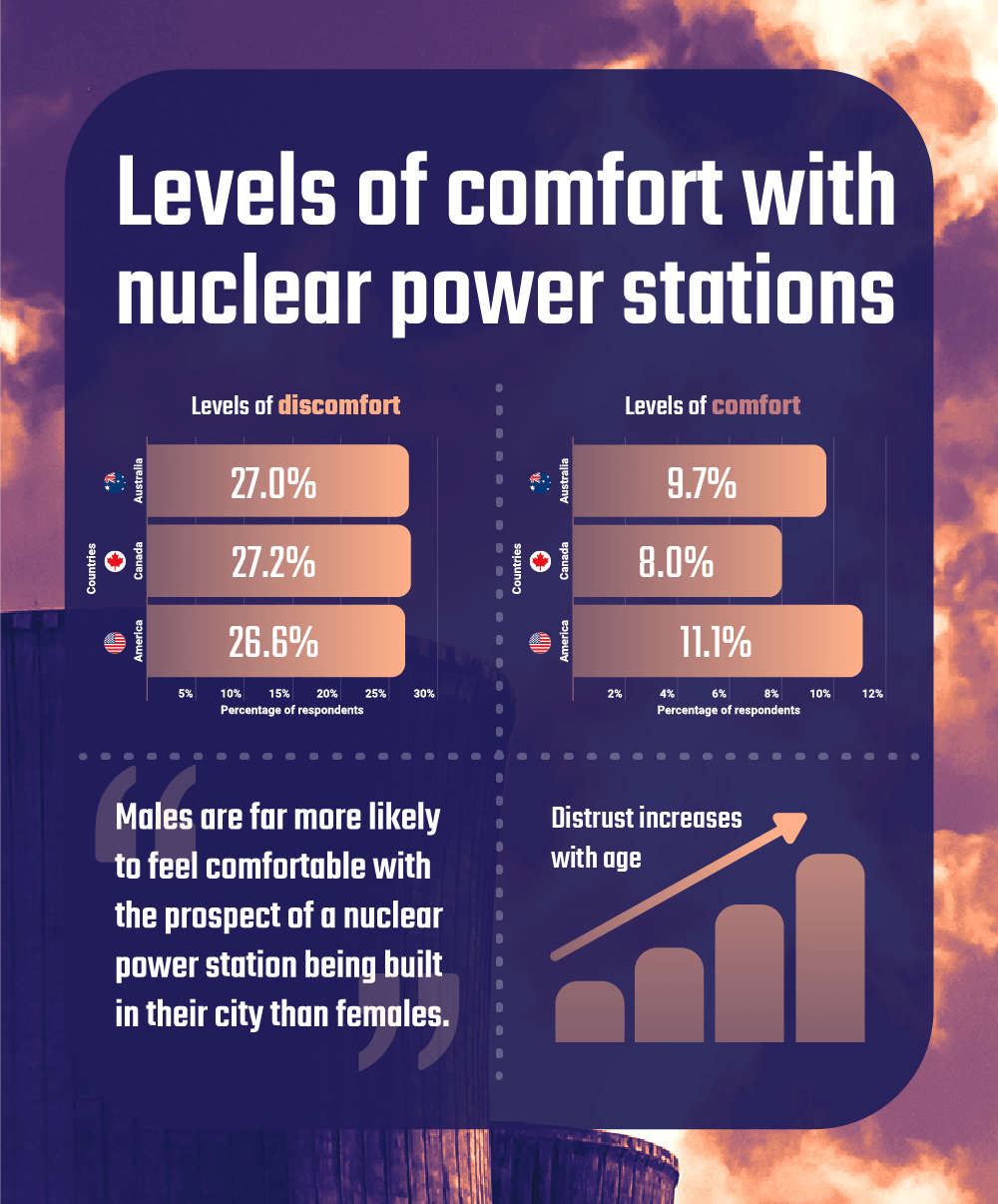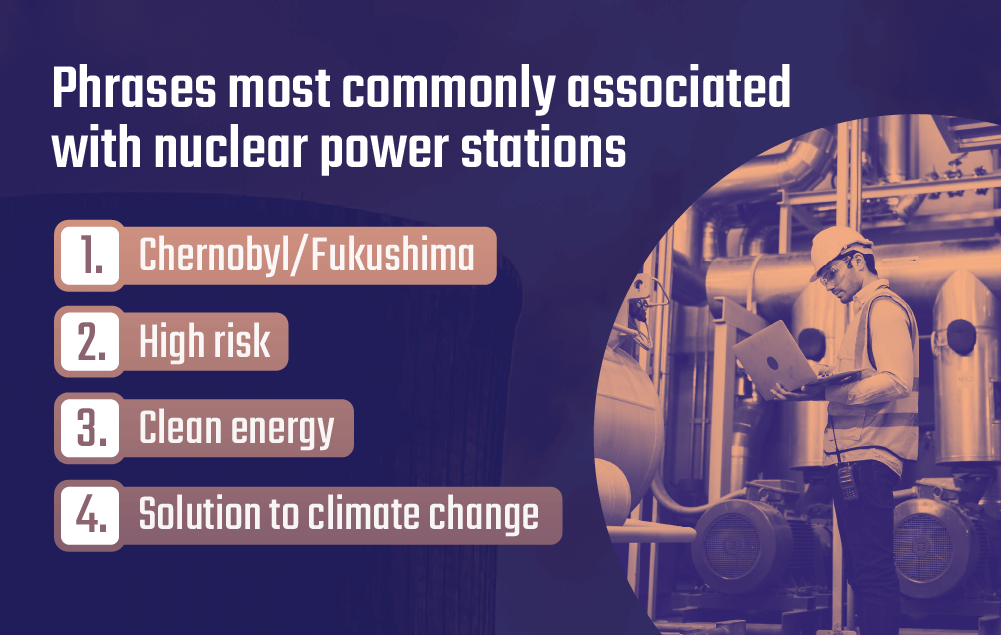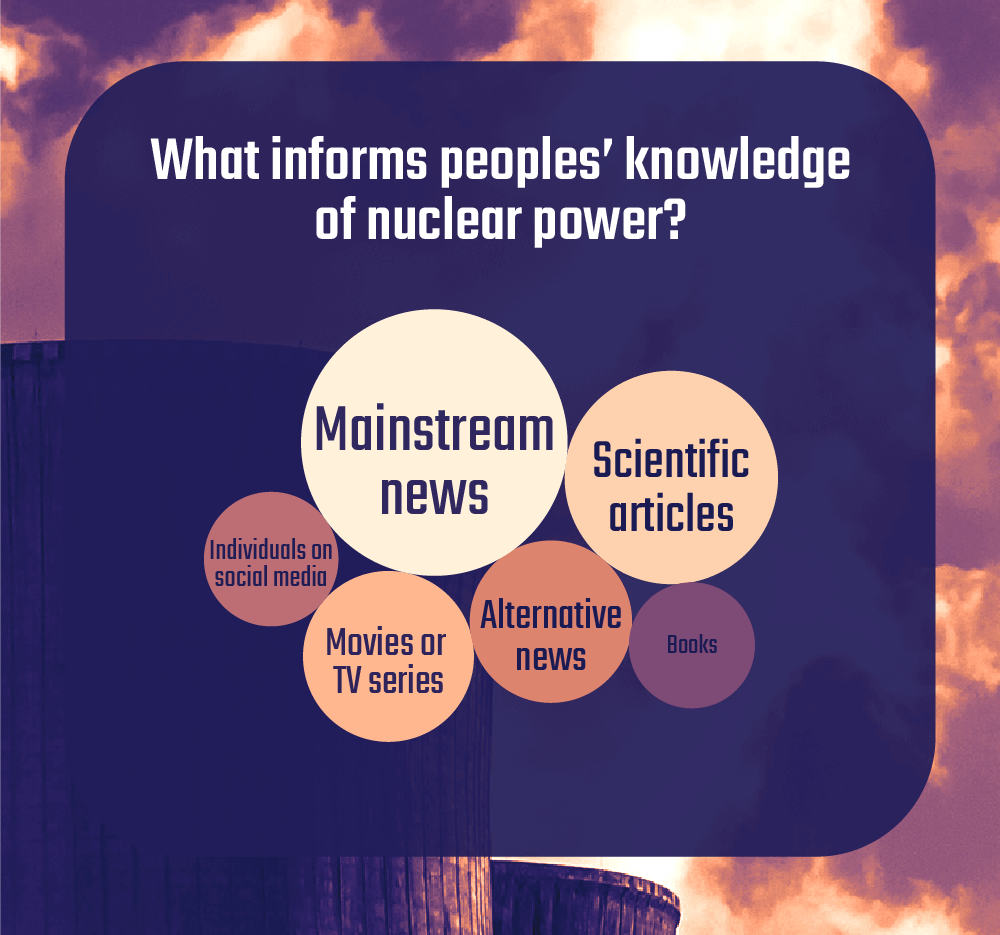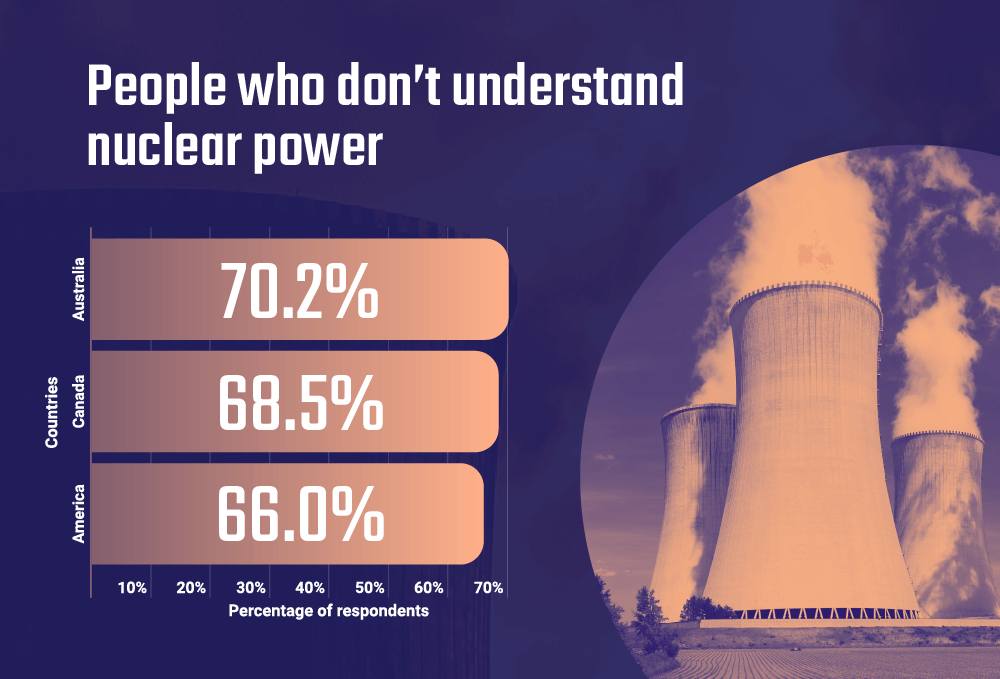The Burrow

What’s the first word that comes to mind when you hear “nuclear power”?
If you said Chernobyl or Fukushima, you’re in company. The vast majority of minds still jump to such historic events and thoughts of ‘high risk’ when nuclear power is mentioned.
Despite how many people fear the use of such power sources, others have stressed the potential benefits of using it as a clean energy source in more recent years.
Understanding different energy sources is important for consumers, so energy comparison website Compare the Market set out to see how people feel about one source in particular – nuclear power stations.
By surveying more than 2,500 adults across Australia, America and Canada, we were able to determine people’s level of comfort with the prospect of increasing the use of nuclear power in their localities.
Before we get into that, however, it’s important to understand that there are alternatives in place for people who aren’t entirely comfortable with the thought of nuclear power, despite it being a clean energy source. For those hoping to steer away from fossil fuel-derived electricity, there are options such as carbon neutral energy plans and renewable energy plans, both of which are designed for the eco-conscious power user. These are plans where the retailer will either generate renewable energy, or ‘neutralise’ the carbon emissions used.
So, how do people feel about nuclear power stations?
When asked how they would feel if a new nuclear power station were built in their city, around 50% of respondents in all three countries said they would feel uncomfortable. In fact, more than a quarter went as far as to say that they would feel extremely uncomfortable.
To put that in perspective, the numbers were considerably lower for those that would feel extremely at ease:
But location was not the only factor that influenced the results. We also found that males felt considerably more at ease with the idea than females across all countries. The difference was so stark that in some cases, the comfort levels of males more than tripled that of females.
Age was another influential aspect. The results revealed that younger generations (18-24-year-olds) were the most likely to feel neutral or not have an opinion on the matter. Conversely, those aged 55 and above were consistently more uncomfortable than any other age group. In this case, it could be that many people’s attitudes toward nuclear power are influenced mainly by their experience through tragic historic events, such as those that took place in Chernobyl and Fukushima.

To answer the question, we asked respondents to identify the words that first came to mind when thinking about nuclear power stations. The results were consistent across all three nations.

The graphic above paints a pretty clear picture – historical events and experiences play a considerable part in people’s opinions on any given topic. But just where are they getting their knowledge?
Across all three countries included in the survey, mainstream media is the most common way that people learn about nuclear power. This is followed, albeit a ways behind, by reading scientific articles, which is favoured primarily by those aged 35-44.
The percentage breakdown for the top two was as follows:
Movies and tv shows were the third most common source of information in Australia and Canada; however, Americans tended to opt for alternative news as their third source.
As for the least common educators, books were less favoured in Australia (13.7%) and America (17.6%). Things were a little different in Canada, where individuals on social media were less influential than any other information source – sought out by just 19.1% of the population.

But social media isn’t wholly unpopular as a source of information. Perhaps unsurprisingly, 18-24-year-olds are more likely to be influenced by social news than any other age group. In Australia’s case, the younger generation also relies on movies and tv shows, whereas alternative news is popular for the same age group in Canada.
In comparison, the older generation (65+) was the most reliant on mainstream news. The dependence was highest in Canada (77.1% of the age group) and slightly lower in America (64.2%).
Despite the breadth with which people are being informed, a considerable knowledge gap in understanding nuclear power remains. At least three in five people across all nations admit they don’t understand the difference between nuclear fission and nuclear fusion.
What is the difference between nuclear fission and nuclear fusion?
Fission largely involves the splitting of atoms – specifically, the collision between a neutron and a larger atom, which forces it to split into two smaller ones. This process releases an enormous amount of energy.1
Fusion is the process of two atoms smashing together to create a heavier atom, which produces much more energy than what is created during fission.1
Both the Fukushima and Chernobyl disasters were the result of nuclear fission accidents.2 Today, nuclear fission plants remain the only type of nuclear plants in existence. Ongoing research is currently being conducted to find a way to harness usable energy from fusion.3
Across all three nations included in Compare the Market’s study, males were more than twice as likely to claim to know the difference between the two than females were. It’s worthwhile reiterating that they also felt the most comfortable with the prospect of having a nuclear power station built in their city.
The results indicate that the source of our information has a considerable impact on our understanding of a topic and our view of how safe it may be.

The rate at which people understand the difference between nuclear fission and fusion also varies quite significantly with age. In North America, for example, 18-24-year-olds are the most likely to grasp the concept (nearly half of all Canadians in this age group claimed as much). On the contrary, Australia’s most knowledgeable age group was 35-44. Those aged 55 and over were the least likely to recognize the difference in all countries.
Again, we can draw similarities between the levels of understanding in this group and where they get their information, which is primarily mainstream media. These two factors combined left no surprise when it was revealed that those aged 55 and over were generally the age group most uncomfortable with a nuclear power station being built in their city.
Compare the Market’s General Manager of Energy, Brett Mifsud, explains the importance of consumers understanding the sources of the energy they use.
“While historic events continue to influence world views on energy generation, we are starting to see a shift in line with progressive attitudes, as seen in Australia’s recent Federal election as an example,” Mr Mifsud said.
“Australia’s mix of energy generation assets could experience a shift in the coming years and ensuring a better understanding of energy sources and having informed opinions around them will be crucial as the country pushes to reduce emissions.
“Our research revealed a large group of people that get their information from unreliable sources, which is contributing to a considerable knowledge gap – this simply will not serve us well moving forward.”
Compare the Market commissioned Pure Profile to survey 503 Australian, 1,009 American and 1,006 Canadian adults in April 2022.
If you are interested in alternative forms of clean energy to help you reduce your carbon footprint, you should start by comparing your options. Using Compare the Market’s free energy comparison tool, not only could you switch to an energy provider that is more aligned to your preferences, but you might be able to reduce your household bills while doing so.